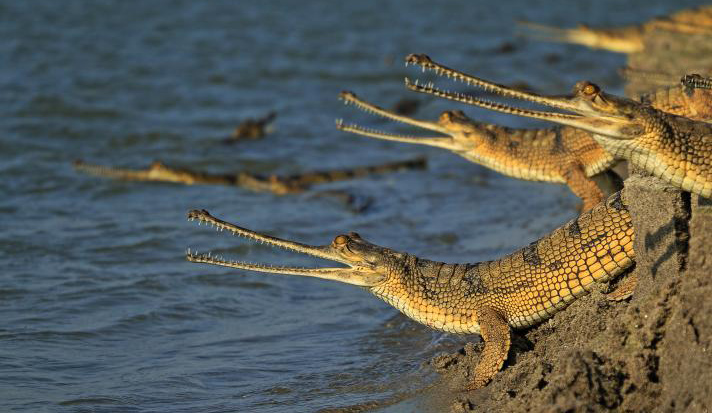
Make the function visible, simple to understand and inviting to try.
Dining can last for hours - we want to change the sitting position from hungry to full, and do a lot of talking inbetween.
Form inspired by an endangered gharial crocodile species found in India and Nepal.

Named after the ‘ghara’, an earthenware pot whose shape resembles the bulb that males develop at the end of their snout, the gharial crocodile is a fish-eating crocodilian that can be found in India and Nepal.
Critically endangered, it is under threat from: infrastructure development and resulting changes in river flows and habitat connectivity; reduction in their fish prey base; entanglement in fishing gear; destruction of nesting and basking sites due to sand mining, riverbank agriculture and other human disturbance; water pollution; and most likely climate change.
Not much research has been done about gharials in the Ganges river basin. WWF-India is seeking to address this gap by undertaking population surveys, gathering biometric data and running a radio-telemetry study. The documentation of present and potential future distribution of gharials, as well as their habitat preferences, is vital for understanding population dynamics and planning species-oriented conservation programmes.
WWF has also been working closely with the Uttar Pradesh Forest Department to release captive-reared juvenile gharials within the Hastinapur Wildlife Sanctuary. Ultimately, WWF’s aim is to establish a breeding population of gharials in the Ganges river basin.
source: WWF India
https://www.wwf.org.uk/what-we-do/projects/gharials-ganga